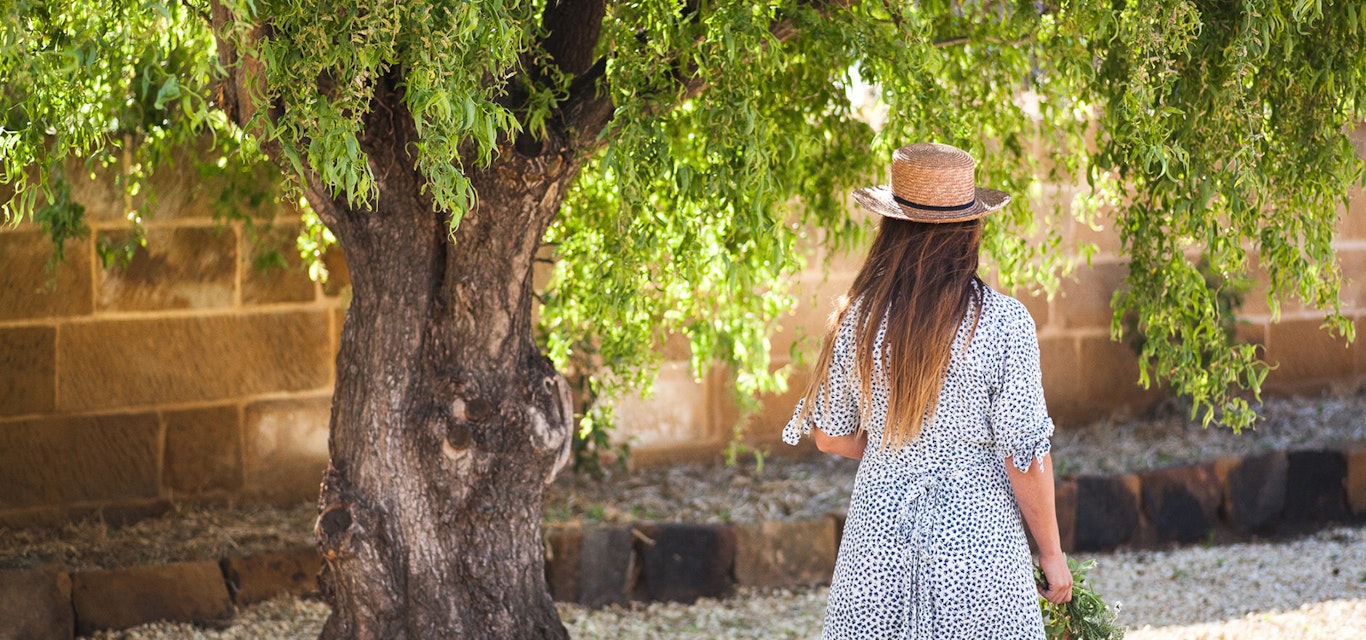Old town new tricks
Oatlands was once known as a place where time stood still. But the times are changing in this scenic Midlands town.
There was a time when Tasmania’s Heritage Highway weaved through a sprinkling of Midlands towns – the Redline bus even stopped at the village of Oatlands so passengers could enjoy scones. Over time though, such townships took a back seat to a more direct route between Launceston and Hobart. Few drivers ever hit the indicator to visit Oatlands. But while commuters weren’t looking, the historic town has been quietly reinventing itself. Not just with a new High Street store or two, but in a world-class kind of way.
Oatlands is Australia’s sandstone capital, claiming the title with more than 150 intact Georgian heritage buildings; more than any town in the country. The streetscape is picture perfect – little wonder it’s been used for movie sets (such as 2018’s The Nightingale). But when we roll into town, it soon becomes clear that innovative long-term locals and new ‘Oatlanders’ have breathed new life into the timeless façades.
And they’ve done so while retaining the town’s charm; with chic boutiques and coffee stops wrapped within thick sandstone walls.
Our first stop is Raffah House; home for the night. The 1850s-built High Street classic has lived many lives, including as a private hospital where more than a local or two were born. Its thoughtful re-imagining as a luxe three-bedroom stay is the work of the seven-generation local farming family the Weedings, who live two kilometres out of town with their 7000-plus sheep.
Raffah House is arrestingly stylish. Guests are welcomed with a complimentary Poltergeist Gin from Shene Estate & Distillery just up the way, garnished with sprigs from the kitchen garden.
Credit: Jodi Wilson
Credit: Jodi Wilson
Credit: Jodi Wilson
A few steps from the front door is Oatlands’ big-ticket new addition, the Callington Mill Distillery. It’s not quite complete when I explore with general manager Rizk Mawass, the opening scheduled for March. The vision of owner John Ibrahim, the completed distillery will offer an elegant restaurant and immersive single malt storytelling.
Having fallen in love with Oatlands, John has invested some $50 million in the game-changing venture, which sits proudly beside the 1837-built Callington Mill – itself once used to grind flour and brew illegal whisky in the convict era. Nearly 200 years later, whisky returns, made from soft Tassie highland water and local barley.
Back on the High Street on the hunt for coffee, we duck our heads into The Kentish, circa 1830s, and are met by the bright and bubbly Remy Potter, daughter of the owners. As she whips up three faultless coffees using Straight Up beans out of Hobart, she chats about the ongoing hotel makeover that will soon include upstairs accommodation and a beer garden.
“During lockdown it was a massive family effort, including my brother, parents and even the grandparents. We each had a room. And we’re still family,” she laughs.
Further up the road we meet textile designer extraordinaire Rebecca Kissling. She’s working on a new shopfront and whisks us into her home to view her work. It doesn’t take long to fall in love with what Rebecca coins a ‘snuggle rug,’ made from the fleece of a Tasmanian ewe and backed with merino felt.
Credit: The Jardin Room
Next stop is The Jardin Room & Provincial Interiors, where owner Debbie Wilson has been sourcing tasteful wares and designing for more than 20 years. Having noted her gorgeous garden and interior pieces dotted around Raffah House, it’s tempting to scoop up a sandstone pear or two for our own garden. But this time we content ourselves with a horsehair brush from Germany (those pears are heavy!).
Just over the road – everything is close in Oatlands – we pop into wine, cheese and spirit merchants, The Imbibers, which opened its doors midway through 2020. Co-owners Brad Williams and Nathan McGiveron are busy preparing for the day ahead and fill me in on the tasting flights of all-local wine, spirits, beer and cider and gourmet platters on offer, giving us yet another important reason to return to Oatlands.
We finish off at Oatlands Antiques. (How can you not explore an antique store when surrounded by such history?) Among the goods lining every wall, I discover a wooden tennis racquet and some bone-handled knives. I leave wondering what I’ll do with the racquet, but oddly happy with my finds. And just like the response to a tennis serve, I will return to Oatlands. Consistently.
This town has recaptured my local heart.
Hello history buffs
Three ways to step back in time when you visit Oatlands:
• The Oatlands Key fob unlocks corners of the town’s historic Military Precinct, including the courthouse. Borrow a free fob from participating High Street businesses.
• Take a crash course in Pugin architecture. As well as designing London’s Big Ben, English architect Augustus Welby Northmore Pugin designed Oatlands’ St Paul’s Church.
• Pick up your copy of Oatlands: stories from the Sandstone for $5 at Northern Midlands Council in Longford or order online.
